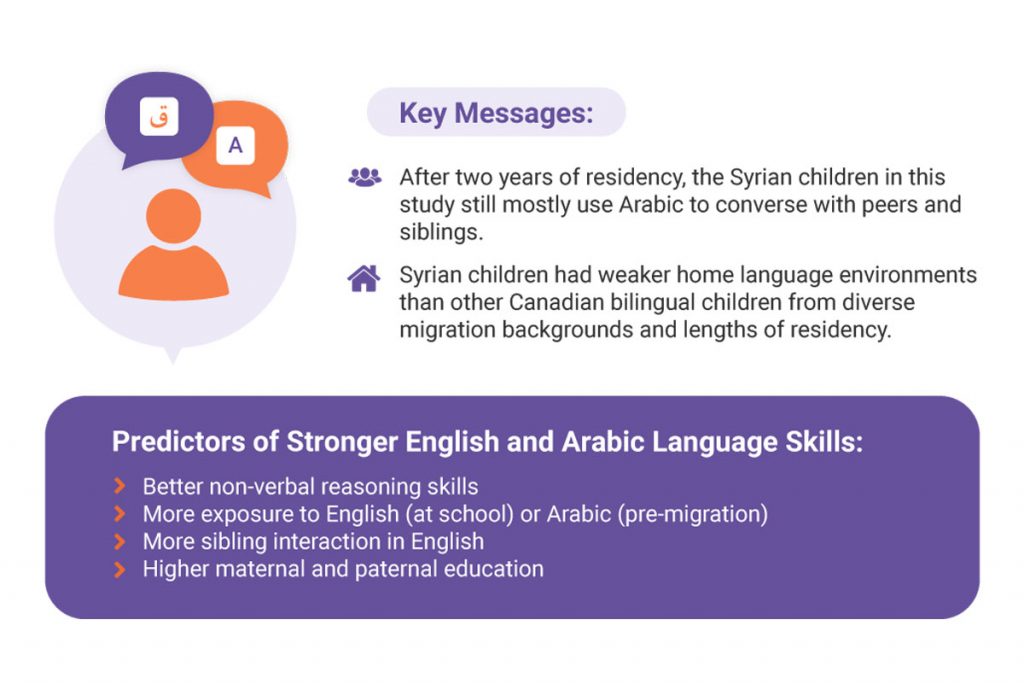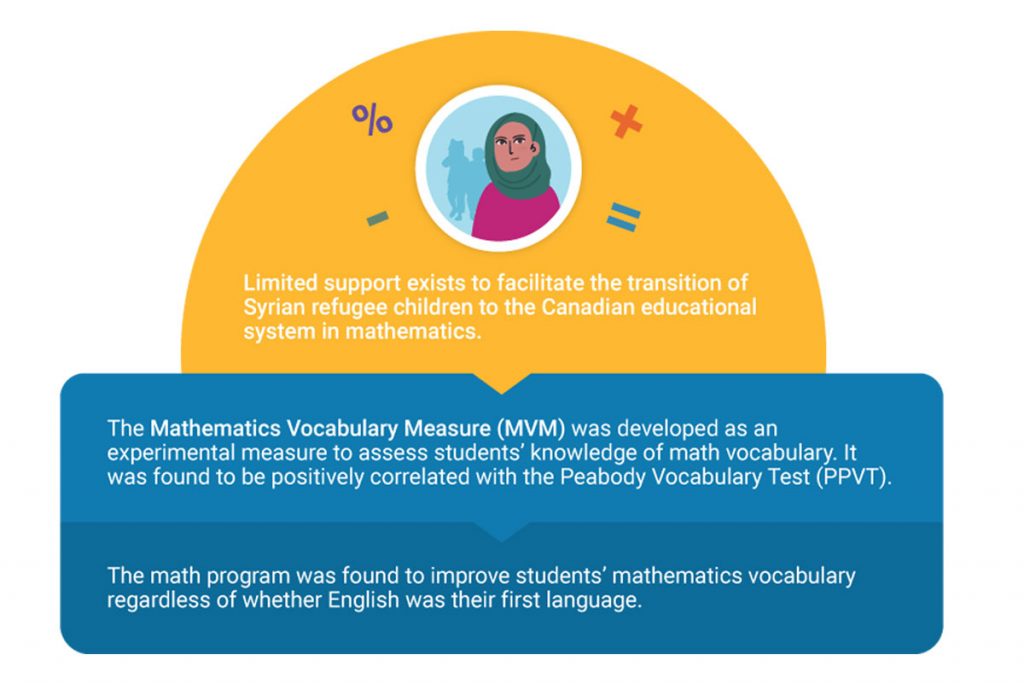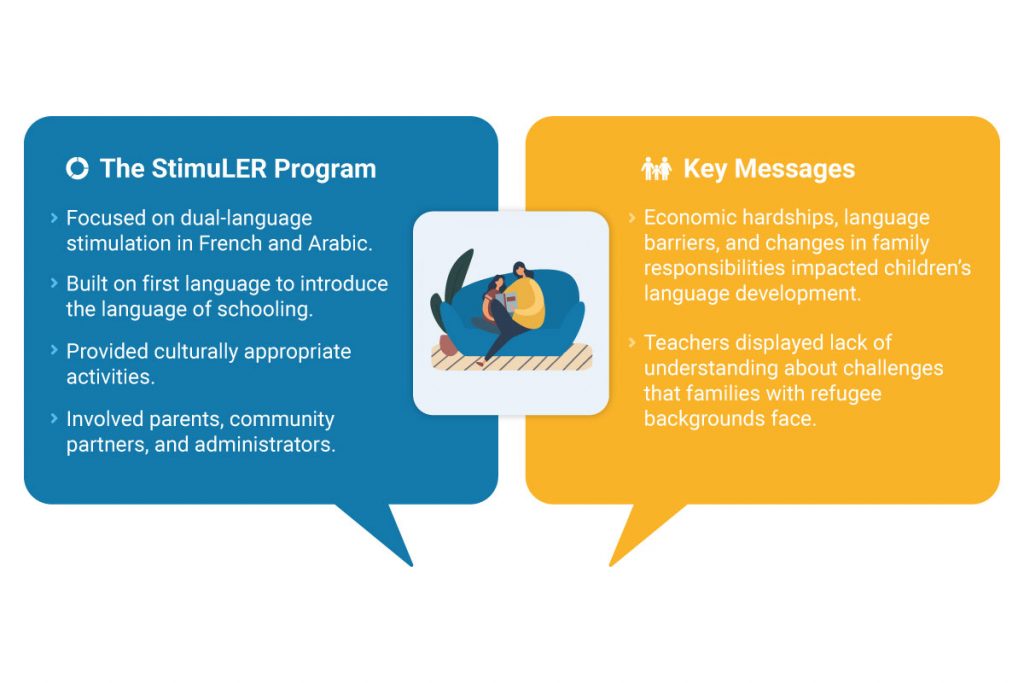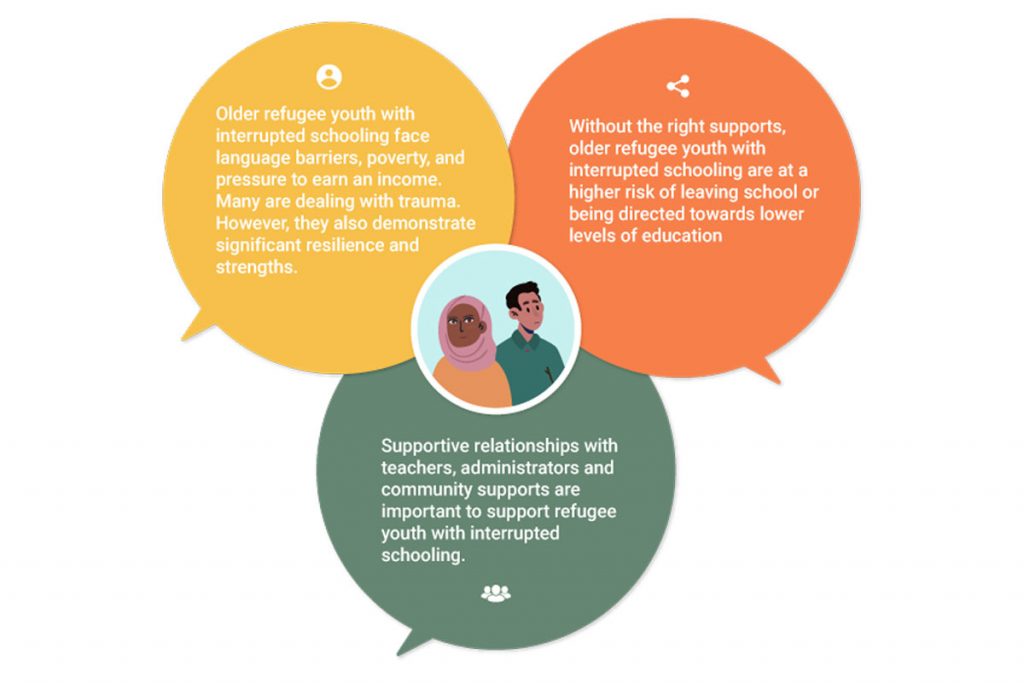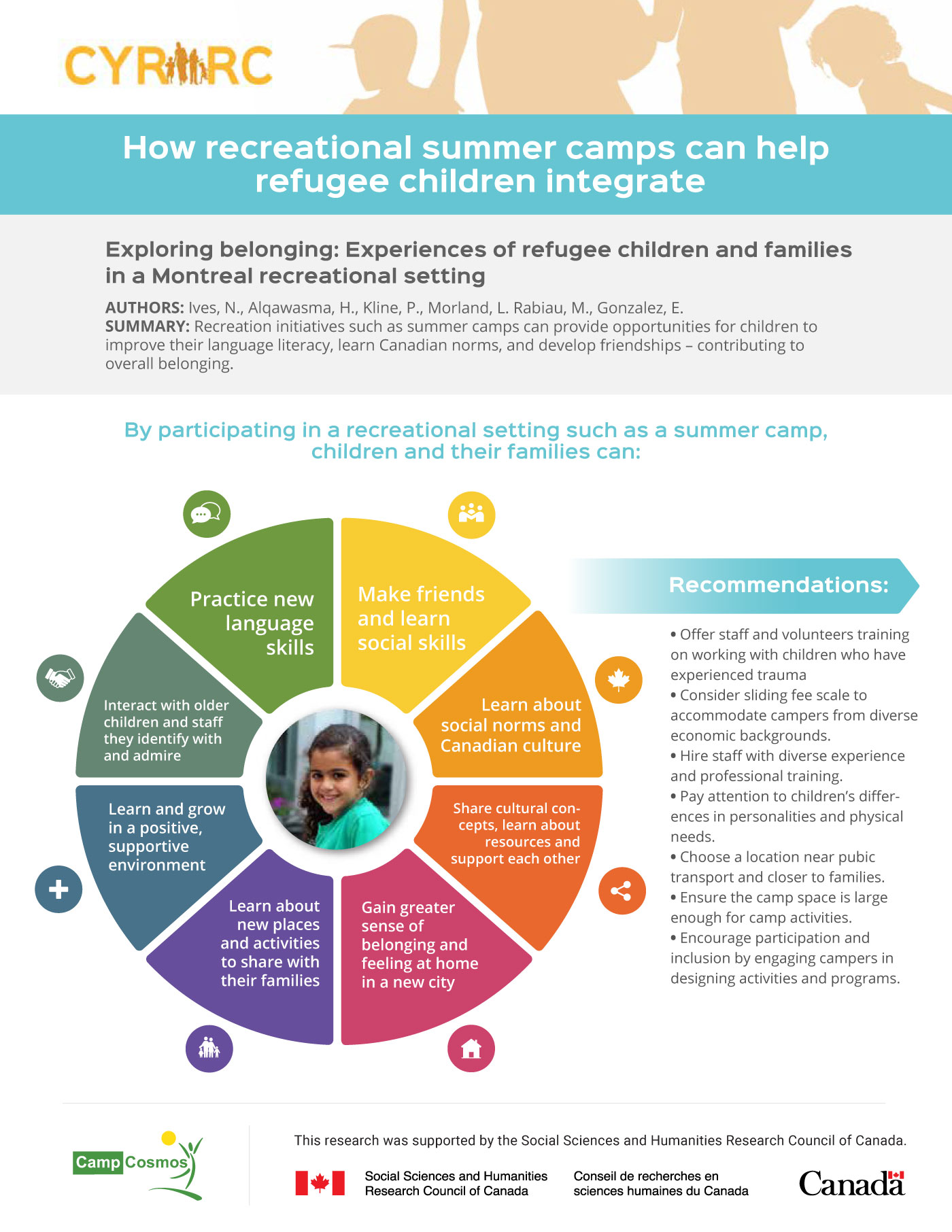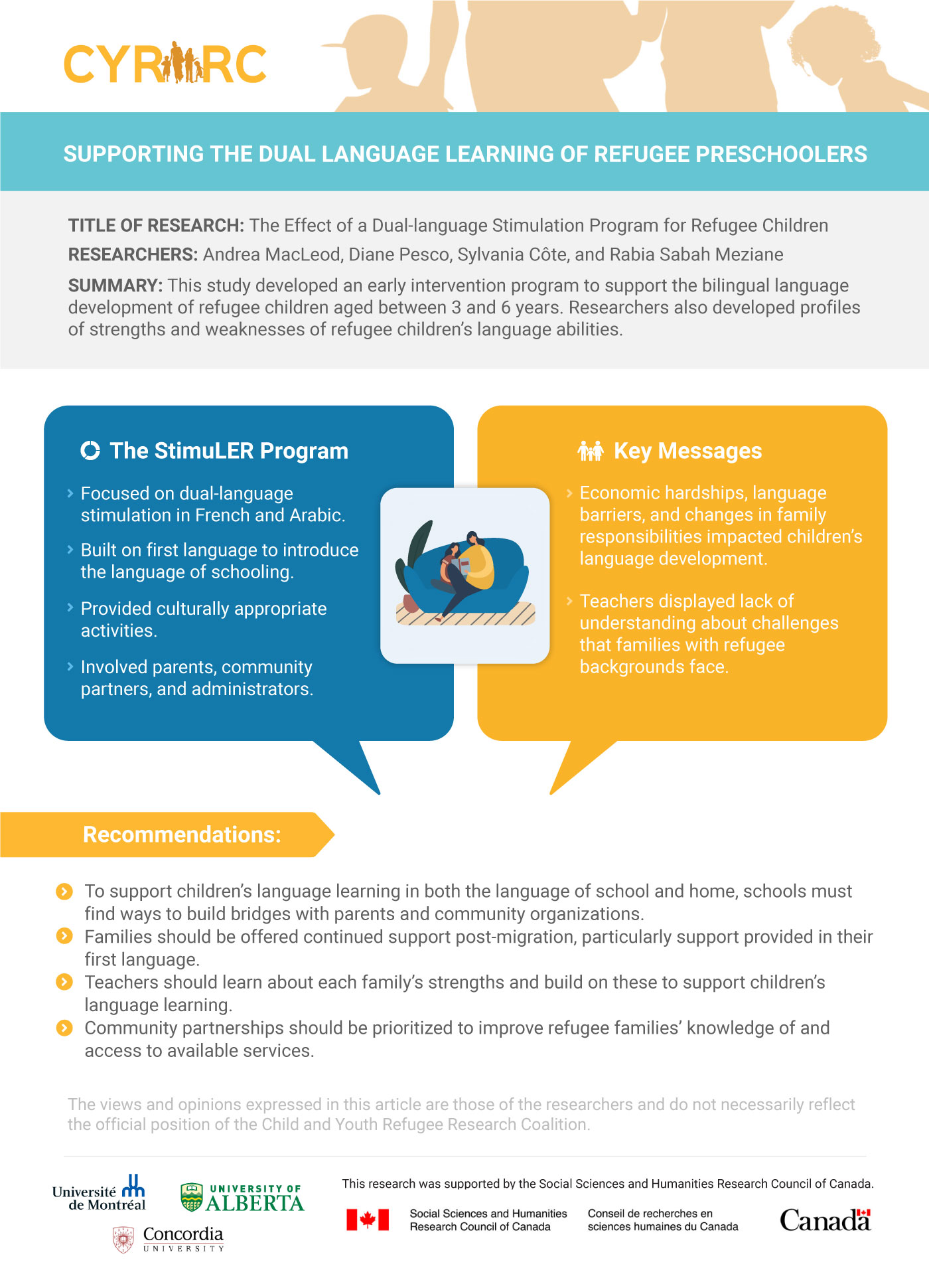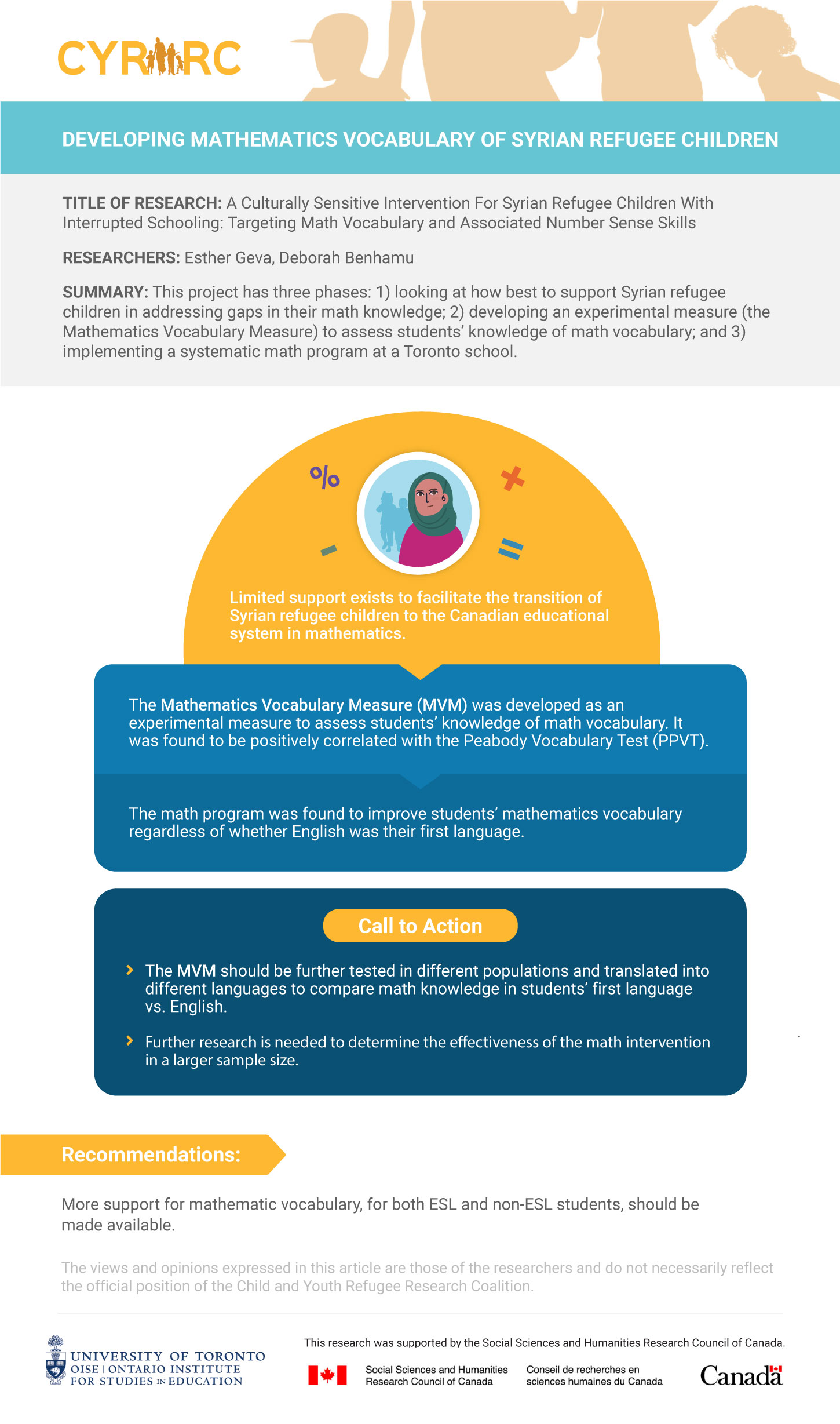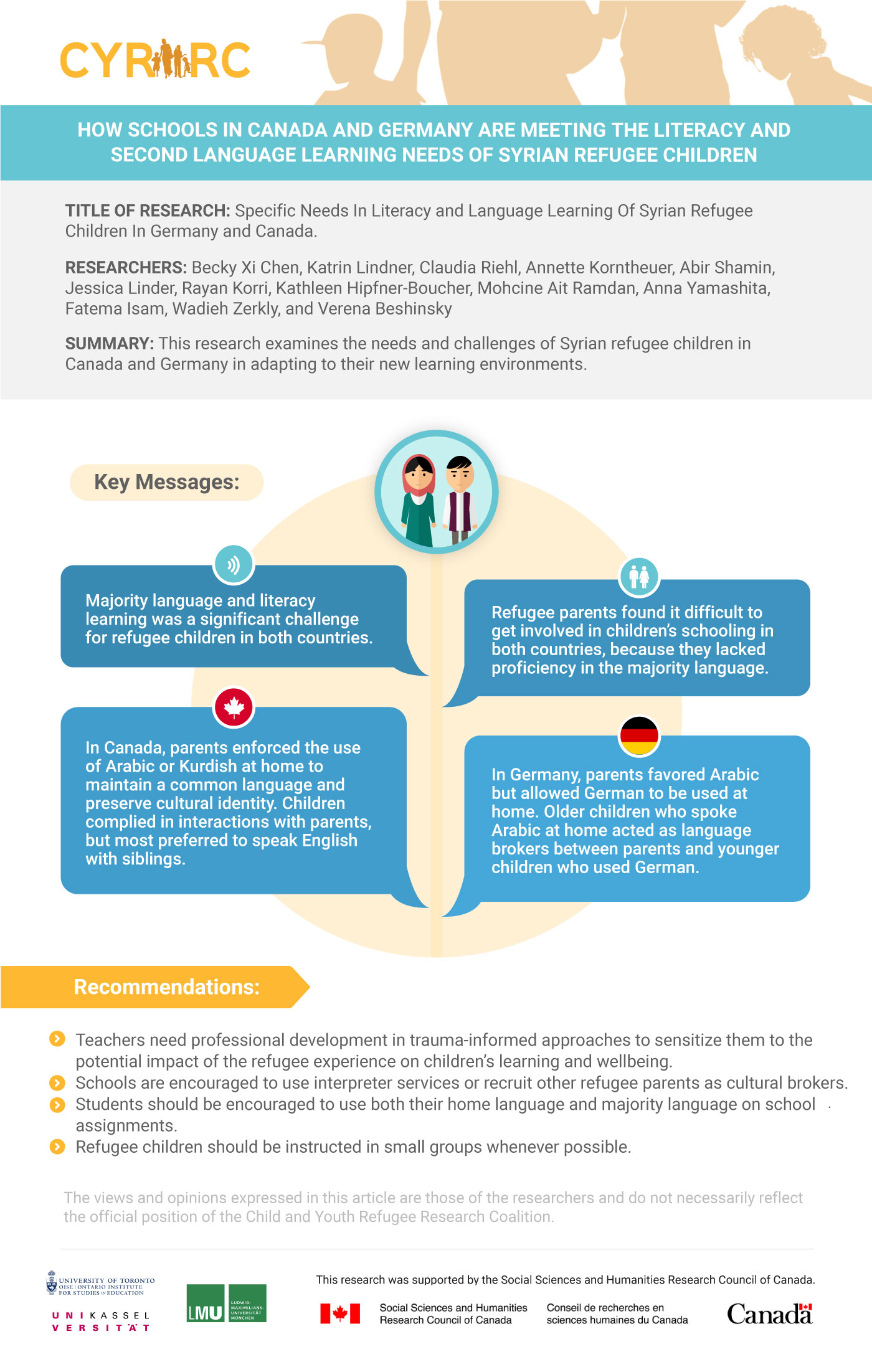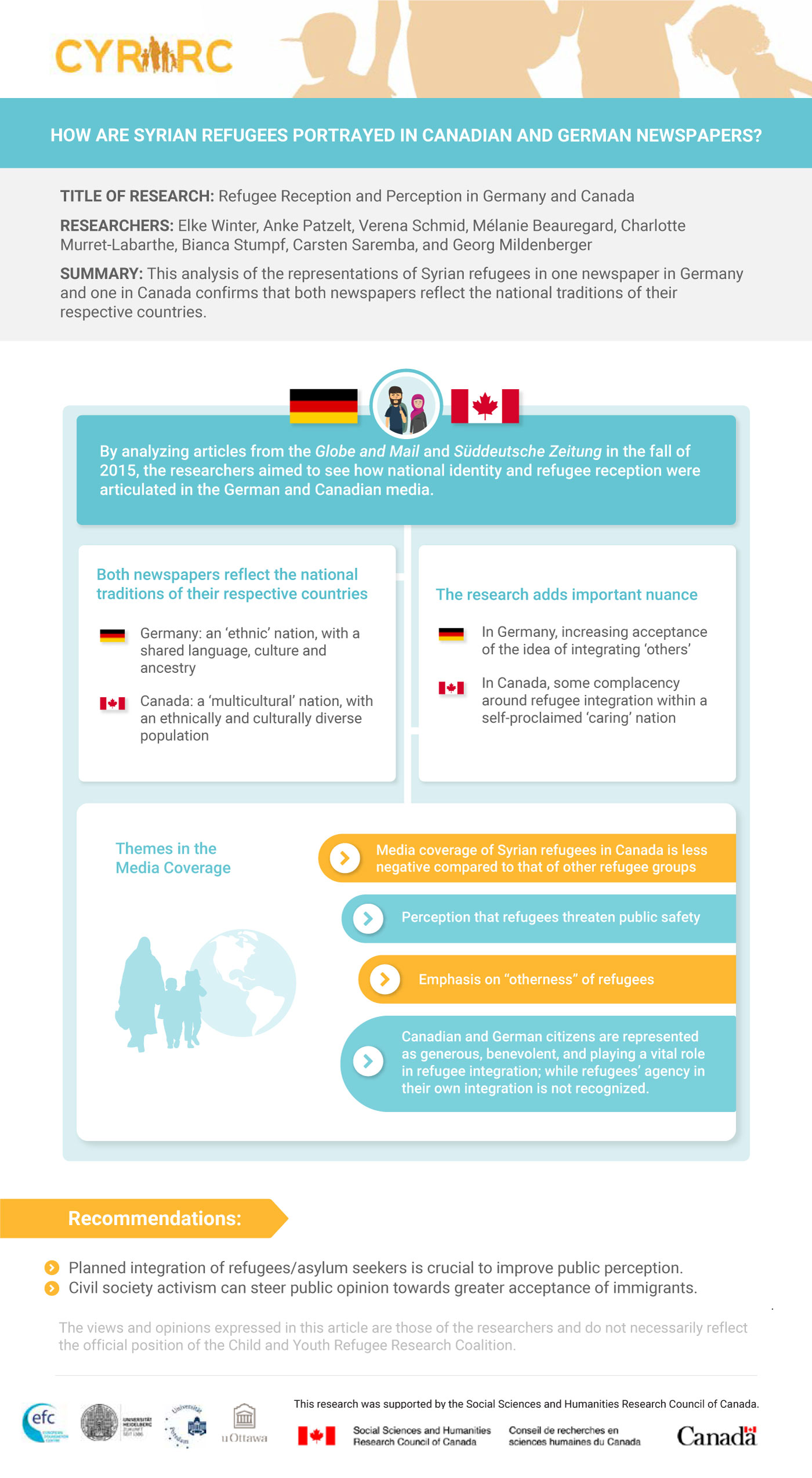Total projects funded
New projects in 2020
Partners engaged
Students trained
Funds disbursed (CAD)
Language & Learning Research
Language and learning projects focus on the language and literacy development of refugee children and youth. Several projects focus on the bilingual language development of refugee children, the fundamentals of language development, and home- and school-level factors that influence language and literacy acquisition. Other projects focus on refugee students’ experiences of interrupted schooling and the Canadian school system. Two projects have developed interventions to support refugee children’s learning.
What supports refugees’ language learning from childhood to adulthood?
Barriers to learning for children aged 3 to 6
Andrea MacLeod and colleagues (2020) found that…
Economic hardship, language barriers between parents and schools, and changes in family roles affect children’s language development.
Teachers may not understand the difficulties faced by families with refugee backgrounds, including the challenge for parents of learning a new language while adapting to a new country.


Supporting learning for children aged 3 to 6
In a case study, Andrea MacLeod and colleagues (2020) found the following strengths support children’s language development in refugee families:
1. Parents who value education
2. High levels of parental education
3. Exposure to the first language (Arabic) at home
Barriers to school-aged children’s learning
Esther Geva and Deborah Benhamu (2020) noted a lack of supports to transition refugee children to the Canadian education system, especially in mathematics.
Becky Xi Chen and colleagues (2020) found that language barriers prevented refugee parents from being involved in their children’s learning.


Supporting school-aged children’s language development
Johanne Paradis and colleagues (2020) found that the following factors were associated with stronger English and Arabic language skills in Syrian refugee children aged 6 to 13:
1. More schooling in English
2. More exposure to Arabic
3. More sibling interaction in English
4. Higher parental education
5. Better non-verbal reasoning skills
Barriers to learning for young adults
Reza Nakhaie (2019) found that experiencing discrimination and engaging in full-time employment increased resistance to school for refugee youth aged 14 to 24. Ray Silvius and colleagues (2020) found that the pressure to earn an income negatively impacted refugee youths’ education.
Ray Silvius and colleagues (2020) also found that language barriers put pressure on refugee youth to interpret for their families and led to miscommunication with schools – especially around age and credit requirements for graduation and post-secondary education.


Supporting learning for young adults
Ray Silvius and colleagues (2020) found that supportive relationships with educators, community support workers, psychosocial supports, and interpretation services were important for refugee youth with interrupted schooling.
New learning interventions for refugee children
Andrea MacLeod and colleagues (2020) developed StimuLER, a bilingual language (French-Arabic) stimulation program for preschool-aged Syrian refugee children. The program involves parents, community organizations, and educators in children’s learning.
Esther Geva and colleagues (2020) developed an after-school program targeting the mathematics vocabulary of ESL students. The program improved math vocabulary and concepts regardless of students’ first languages.

- Project Infographics
Paradis 2A “Examining language, literacy, and wellbeing in Syrian refugee children” (2020)
Click image to view
Geva 2C “Developing mathematics vocabulary of Syrian refugee children” (2020)
Click image to view
MacLeod 2E “Supporting the dual language learning of refugee preschoolers” (2020)
Click image to view
Silvius 1J “Addressing the experiences and needs of older refugee youth with interrupted schooling” (2020)
Click image to view

